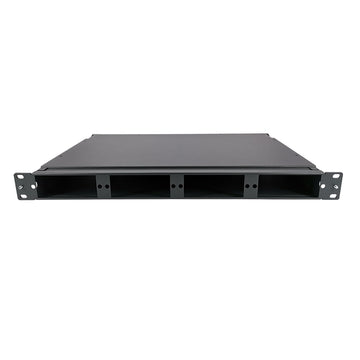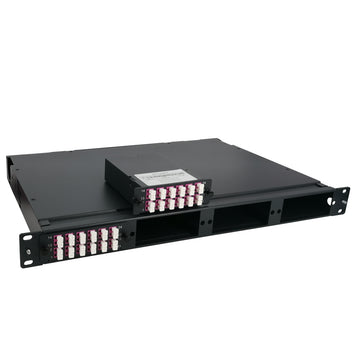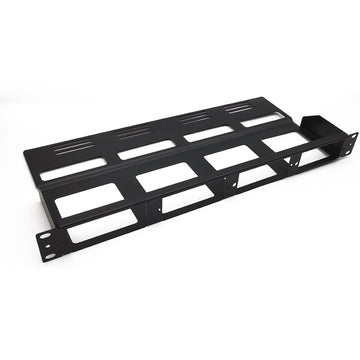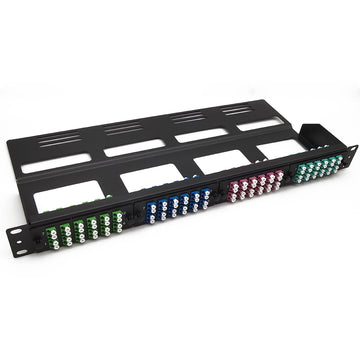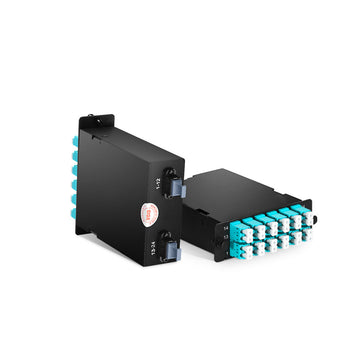800G / 1.6T Transceiver Test
Currently, major optical module manufacturers are utilizing 4-channel optical sampling oscilloscopes to enhance the TX test efficiency of their 400G/800G/1.6T module production lines. However, it is important to note that due to differences in the test architecture between 4-channel and single-channel TX testing, certain details require extra attention. Otherwise, even with the purchase of a 4-channel oscilloscope, it may only be used as a single-channel device, ultimately impacting production line expansion and delivery schedules.
Parallel TX Optical Eye Test Architecture
The diagram below illustrates a typical parallel TX optical eye test architecture, featuring two 4-channel Anritsu MP2110A units equipped with built-in OCRUs for parallel testing of 8-channel optical eyes in 800G modules. The DSP inside the optical module drives the laser to generate 8 channels of optical signals under test, with PRBS/SSRPQ patterns. The OCRU of the first MP2110A extracts the clock signal from Lane 0 and provides trigger signals for the optical eyes of Lanes 0~3, while the OCRU of the second MP2110A extracts the clock signal from Lane 4 and provides trigger signals for Lanes 4~7. In actual production line setup, optical switch matrices can be employed to achieve more flexible configurations, thereby improving the utilization rate of the oscilloscopes.

Optical Modules Configured for Synchronous Output
First, we need to understand what skew is. In multi-channel parallel operation scenarios, delay differences between optical channels are inevitable. As shown in the figure below, the left side illustrates the ideal scenario where skew = 0, while the right side demonstrates the presence of skew.

The IEEE 802.3 standard permits a certain amount of skew between channels. It defines the link between the PMA/PMD/Medium as SP1 to SP6 and specifies the absolute upper limit and standard deviation of skew for each lane. It can be observed that as the signal travels through longer links, both the upper limit and standard deviation of skew increase. VIAVI dedicates a section to explaining how to perform skew tolerance testing using the ONT.



As shown in the figure below, the optical module performs deskew at the RX end through Alignment Markers in the PCS layer.
It is important to note that, unlike bit error rate testing, when conducting TX optical eye diagram tests, the four channels share a common trigger. This means that except for the channel used for clock extraction, the other three channels introduce additional jitter due to SP3 skew during testing, making it impossible to accurately measure the optical eye diagram.

Fortunately, DSP manufacturers have taken this into account and developed a multi-channel synchronous output mode for TX optical signals. This mode minimizes inter-channel skew and generates the required PRBS/SSPRQ pattern. In this configuration, the DSP can even provide an additional frequency-divided clock signal to the oscilloscope as a trigger, eliminating the need for an OCRU and reducing costs.
If optical module manufacturers observe that only the channel used for clock extraction shows a normal eye diagram on a 4-channel oscilloscope, while the other three channels exhibit excessive jitter, there is no need to assume a major module failure. Initially, the 4-channel oscilloscope can be used in single-channel mode to verify whether the eye diagrams of the other three channels return to normal when extracting their own clocks. Once the TX optical eye diagram is confirmed to be normal in single-channel mode, the DSP firmware can be updated to support synchronous multi-channel output.
Oscilloscope Triggering Considerations
Even when the DSP operates in synchronous output mode, it cannot guarantee that the skew between TX optical paths will be reduced to zero. Due to differences in circuit design among DSP manufacturers, the stability of the synchronous output mode and the residual skew may vary. It is important not to prematurely classify modules with higher residual skew under synchronous output mode as defective based solely on 4-channel oscilloscope eye diagram results. This is because the IEEE 802.3 standard is relatively lenient regarding skew (e.g., allowing 32UI skew variation for 53.125Gbaud SP3).
Ultimately, the performance of an optical module should be evaluated based on its bit error rate (BER) after forward error correction (FEC) and sensitivity test results on a switch. (The author believes these are the core indicators determining optical module performance.) The ultimate goal of TX optical eye diagram testing is to ensure reliable BER and sensitivity performance after FEC. Sacrificing good modules solely to improve efficiency through 4-channel parallel testing is counterproductive.
In 4-channel parallel eye diagram testing, additional jitter caused by skew places greater demands on oscilloscope triggering. Oscilloscope manufacturers with stronger jitter filtering capabilities will yield eye diagram quality closer to single-channel performance in multi-channel scenarios and will be better able to adapt to DSP chips with higher skew.
Before finalizing procurement decisions, optical module manufacturers must thoroughly validate the degree of eye diagram degradation in 4-channel mode compared to single-channel mode for their TX optical solutions. Ensure that any degradation remains within acceptable tolerances before committing to a specific solution.
